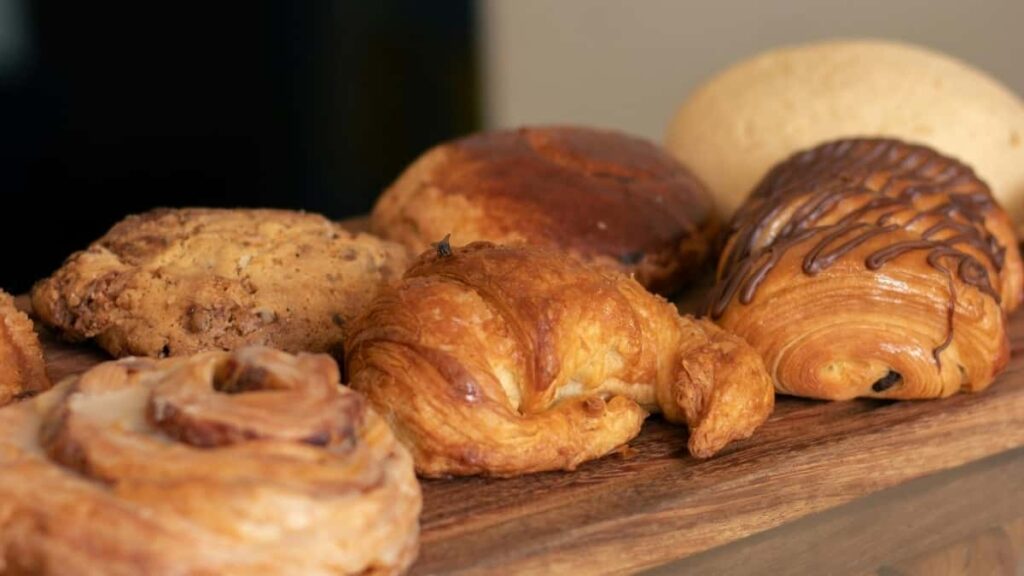💡 Subsection Title
If you’re a UK creator or manager trying to get emerging artists featured by Uzbekistan brands via Line, you’ve probably hit the same wall I did: Line isn’t the obvious first port of call for Central Asia. Yet — and this is the kicker — Line can be a surprisingly effective channel when you know how to use it. The real challenge is not the app itself but picking the right brand targets, localising your approach, and using Line alongside other channels like Telegram and Instagram.
Brands in Uzbekistan have different digital habits to Western markets. Some use local messaging and community tools heavily; others lean on Instagram for visual campaigns. There’s also a trend among B2B event organisers — like the Guzhen Lighting Fair Organising Committee — to build smart matchmaking tools that connect companies before a show, which shows how brands increasingly expect pre-vetted, data-driven collaborations (Guzhen Lighting Fair Organising Committee). That mindset helps explain why your outreach needs to be concise, outcome-driven and easy for a busy brand to accept.
This guide pulls together street-level tactics (real message templates you can copy), platform comparisons, cultural notes and a realistic follow-up schedule. I’ll show you how to find the right decision-makers on Line, what to say first, and how to convert a chat into a paid or earned feature for an emerging artist — without sounding spammy or arrogant.
📊 Data Snapshot Table Title
| 🧩 Metric | Option A | Option B | Option C |
|---|---|---|---|
| Platform | Line | Telegram | |
| 👥 Uzbek users (est.) | 60,000 (est.) | 2,000,000 (est.) | 1,200,000 (est.) |
| 📩 B2B messaging tools | Official accounts, chat, limited APIs | Bots, channels, groups — very flexible | DMs, branded accounts, collab tags |
| 🔍 Matchmaking potential | Medium | High | Medium |
| ⚡ Typical brand response rate (est.) | 10–20% | 20–35% | 15–25% |
| 🛠️ Ease for UK creators | Medium | High | High |
The table gives a quick, practical snapshot: Line works but isn’t the dominant messenger in Uzbekistan — Telegram and Instagram tend to have broader reach and often better response rates. Use Line where it’s strategically suitable (specific brands, official accounts, or when a brand gives Line as a contact), but run parallel outreach on Telegram and Instagram to maximise chances.
This snapshot shows the trade-offs. Line is neat for one-to-one chats and branded official accounts, which is handy for polished proposals and quick voice-note approvals. Telegram shines because Uzbek communities and many brand teams use channels, groups and bots — it’s easier to find decision-makers and get rapid replies. Instagram is essential for visual storytelling and campaign proof; many brands manage commissions and creative features there. The result: if you’re trying to pitch an emerging artist, don’t treat Line as the single attack vector — it’s a specialist weapon in a three-tool kit.
Why these patterns matter: event organisers and B2B platforms are moving to smarter matchmaking and pre-event connections (see Guzhen Lighting Fair Organising Committee’s Denggle launch). That means brands increasingly expect a clear, measurable pitch rather than a vague “can we collaborate?” message. Your job is to make the offer easy to accept — on Line that usually means short messages, a one-page campaign spec, and a clear next step (call, sample content or paid trial).
😎 MaTitie SHOW TIME
Hi, I’m MaTitie — the author of this post, a bloke who’s tested loads of tricks to get artists noticed and spent far too long wrangling DMs and awkward email threads.
I’ve tried the lot: pitching via DMs, Telegram bots, and official app accounts — and I’ll be blunt — global platform access and privacy tools can make a difference when you’re handling international outreach and multi-country comms.
If you’re after peace of mind and faster, safer connections while you sort cross-border collaborations, use a solid VPN. I recommend NordVPN — fast, easy to use, and it helps keep your personal accounts secure when you’re bouncing between apps and shared devices.
👉 🔐 Try NordVPN now — 30-day risk-free.
This post contains affiliate links. If you buy through them, MaTitie might earn a small commission.
💡 Subsection Title
How to actually find Uzbekistan brands on Line (and what to say)
1) Map targets before you message
– Start with brand verbs: think “homewares”, “music venues”, “fashion labels”, “cafés”, “telco promotions”. Use Instagram and business directories to shortlist names. Many Uzbek brands list Line or Telegram in their social bios — gather those handles.
– Use B2B platforms and fair organisers for leads. The Guzhen Lighting Fair’s Denggle shows the value of platforms that let companies upload profiles and match — a similar logic applies: look for Uzbek B2B directories or marketplace listings where brands flag their preferred contact apps (Guzhen Lighting Fair Organising Committee).
2) Find the right account / person on Line
– Look for official Line accounts (verified or business accounts). They’re more likely to be maintained by marketing teams.
– If Line shows a generic account, search for the brand on Telegram or Instagram too — often the Line contact is a customer-service handle and another platform has the marketing contact.
3) First message formula (short, human, outcome-led)
– Subject when possible (Line chats can start like a DM): “Quick collab idea — feature for emerging UK artist (30s)”.
– Message body pattern: 1–2 lines intro (who you are), 1 line outcome (what you offer), 1 line ask (call/approval/sample), 1 line cred (link to 1–2 examples). Keep it ≤4 lines.
Example: “Hi — I’m Jess, manager for an emerging violinist based in London. We’ve got a short in-store performance & social package that drives footfall. Would your marketing lead be open to a 30s sample clip? Here’s a quick reel: [link]. If yes, I’ll send a one-page plan.”
4) Localise — don’t overdo it
– A one-line Uzbek or Russian greeting helps. Don’t translate the whole pitch unless you can do it well. A short Uzbek phrase (or “Salom” / “Здравствуйте”) opens doors; then switch to English if they reply in English. This respects local language without promising fluency.
5) Make “data-friendly” offers
– Brands that use matchmaking or B2B features expect measurable outcomes. Offer a simple metric: expected social reach, engagement, or store visits. If you can, reference a past result (e.g., “We drove 1,500 views and 120 sign-ups at a London pop-up”).
6) Follow-up cadence (gentle persistence)
– Wait 3–4 days, send a one-line follow-up. If no reply after two follow-ups, move on and try the brand’s Telegram or Instagram contact. Brands are busy and often prefer platforms they already monitor.
Tone, legalities and cultural flavour
– Avoid imagery or wording that risks cultural offence — look at recent brand missteps worldwide and the backlash that follows (for example, Swatch removed a campaign after it caused offence — NBC Bay Area). Be conservative, ask for brand guidelines early, and offer to adapt content.
– Be clear about rights: if the feature includes recorded performance, outline how the footage will be used and who owns what. That avoids surprises.
🙋 Frequently Asked Questions
❓ How do I find verified Line business accounts in Uzbekistan?
💬 Start with the brand’s Instagram or website — many list Line handles there. Use local business directories and look for official account badges on Line. If unsure, ask a short verification question in your first message (e.g., “Is this the marketing account?”).
🛠️ I don’t speak Uzbek — is that a dealbreaker?
💬 Nope. A short greeting in Uzbek or Russian helps. Most brand marketers will reply in Russian or English; the key is clarity and a concise offer that requires little translation.
🧠 What’s the simplest offer that Uzbek brands like to accept?
💬 A low-effort, measurable trial: a 30–60s reel or live performance with a simple social amplification promise (e.g., “we’ll push to X followers and tag your brand, and supply a 30s in-store edit”); make it easy for them to say yes.
🧩 Final Thoughts…
Line can be a smart channel if you approach Uzbek brands with respect, brevity and measurable offers. Treat Line as part of a multi-channel outreach strategy — start with Instagram for discovery, use Telegram to tap into community-driven groups, and bring Line in when a brand lists it or prefers one-to-one chat. Make your pitch easy to accept: short, localised, and tied to a clear outcome.
Watch for cultural sensitivity and brand guidelines, and consider using secure tools (VPNs) when crossing markets. Event platforms and B2B matchmaking trends (e.g., Denggle-like tools) mean brands now expect clear proposals — so give them a neat, one-page campaign spec and a single next step.
📚 Further Reading
Here are 3 recent articles that give more context to this topic — all selected from verified sources. Feel free to explore 👇
🔸 MTNL defaults on loan repayments touch a whopping ₹8,700 crore
🗞️ Source: livemint – 📅 2025-08-18
🔗 Read Article
🔸 China chases Canon’s chipmaking process as ASML alternative
🗞️ Source: techzine – 📅 2025-08-18
🔗 Read Article
🔸 Swanson Reed Achieves International ISO 27001 Security Certification
🗞️ Source: techbullion – 📅 2025-08-18
🔗 Read Article
😅 A Quick Shameless Plug (Hope You Don’t Mind)
If you create content on Instagram, TikTok, Line, Telegram or elsewhere — don’t let your work vanish into the feed.
🔥 Join BaoLiba — the global ranking hub built to spotlight creators like YOU.
✅ Ranked by region & category
✅ Trusted by fans in 100+ countries
🎁 Limited-Time Offer: Get 1 month of FREE homepage promotion when you join now!
Feel free to reach out anytime: [email protected]
We usually respond within 24–48 hours.
📌 Disclaimer
This post blends publicly available reports (including the Guzhen Lighting Fair Organising Committee’s B2B initiative and recent brand-case coverage from NBC Bay Area and Yahoo) with practical experience and AI-assisted drafting. It’s intended as practical guidance — double-check brand contacts and legal terms before signing any agreements.


